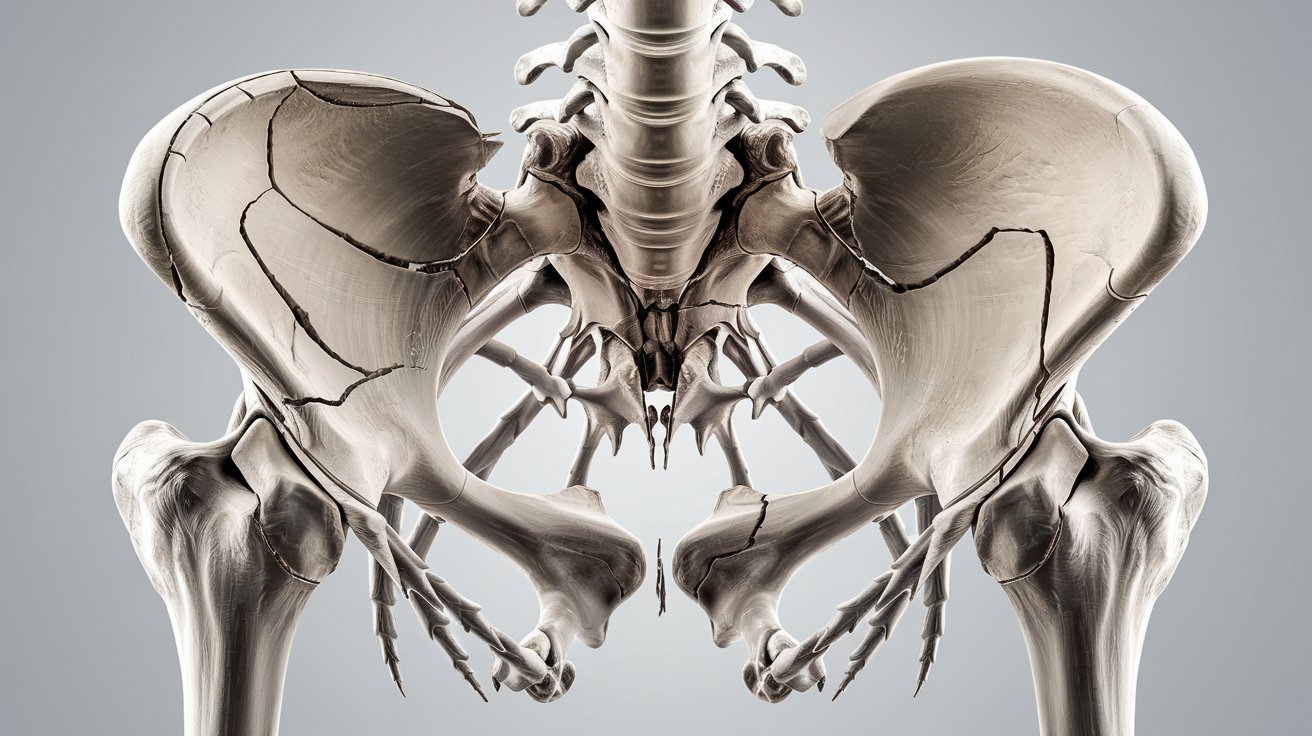
What is a straddle fracture? A straddle fracture is a type of pelvic injury where both sides of the pelvis break. This injury often results from high-impact trauma, like car accidents or falls from significant heights. The name "straddle" comes from the way the fracture pattern resembles someone straddling an object. These fractures can be severe, leading to complications such as internal bleeding or damage to nearby organs. Treatment usually involves surgery, physical therapy, and a lengthy recovery period. Understanding the causes, symptoms, and treatments of straddle fractures can help in recognizing and addressing this serious condition promptly.
Key Takeaways:
- Straddle fractures, caused by high-impact trauma, result in severe pelvic injuries. Recognizing symptoms early and seeking immediate medical attention is crucial for effective treatment and recovery.
- Treatment for straddle fractures may involve surgery, pain management, and physical therapy. Recovery can be lengthy, but gradual increase in activity levels and regular follow-up visits are essential for proper healing.
What is a Straddle Fracture?
A straddle fracture is a type of pelvic fracture that involves both sides of the pelvis. This injury often results from high-impact trauma, such as car accidents or falls from significant heights. Understanding the details of this condition can help in recognizing symptoms and seeking timely medical care.
- Common Cause: High-energy trauma, like car crashes or falls, often leads to straddle fractures.
- Pelvic Ring: This fracture affects the pelvic ring, which is crucial for supporting the body's weight.
- Double Break: It involves breaks on both sides of the pelvis, making it particularly severe.
- Emergency Situation: Immediate medical attention is required due to potential complications.
Symptoms of a Straddle Fracture
Recognizing the symptoms early can make a significant difference in treatment outcomes. Here are some common signs to watch for:
- Severe Pain: Intense pain in the pelvic area is a primary symptom.
- Swelling: Noticeable swelling around the pelvis can occur.
- Bruising: Bruises may appear on the skin near the fracture.
- Difficulty Moving: Movement, especially walking, becomes extremely painful.
- Numbness: Numbness or tingling in the legs might be felt due to nerve damage.
Diagnosis of Straddle Fracture
Accurate diagnosis is crucial for effective treatment. Medical professionals use various methods to confirm a straddle fracture.
- X-Rays: X-rays are commonly used to visualize the fracture.
- CT Scans: CT scans provide detailed images of the pelvic area.
- MRI: MRI scans can help assess soft tissue damage.
- Physical Exam: Doctors perform physical exams to check for pain and mobility issues.
Treatment Options for Straddle Fracture
Treatment varies based on the severity of the fracture. Here are some common approaches:
- Surgery: Severe cases often require surgical intervention.
- Internal Fixation: Metal rods or screws may be used to stabilize the pelvis.
- External Fixation: External devices can help keep the pelvis in place during healing.
- Pain Management: Medications are prescribed to manage pain.
- Physical Therapy: Rehabilitation exercises aid in recovery.
Recovery Process
Recovery from a straddle fracture can be lengthy and challenging. Here’s what to expect:
- Hospital Stay: Patients may need to stay in the hospital for several days.
- Bed Rest: Extended bed rest is often necessary.
- Mobility Aids: Crutches or walkers might be needed during recovery.
- Follow-Up Visits: Regular check-ups ensure proper healing.
- Gradual Activity: Gradual increase in activity levels is recommended.
Potential Complications
Straddle fractures can lead to various complications if not treated properly.
- Infection: Surgical sites can become infected.
- Blood Clots: Immobility increases the risk of blood clots.
- Nerve Damage: Nerves in the pelvic area might be damaged.
- Chronic Pain: Long-term pain can persist even after healing.
- Organ Damage: Internal organs near the pelvis could be injured.
Prevention Tips
While not all accidents can be prevented, some measures can reduce the risk of a straddle fracture.
- Safety Gear: Wearing seat belts and using protective gear can help.
- Fall Prevention: Taking precautions to avoid falls, especially in high-risk environments, is crucial.
Final Thoughts on Straddle Fractures
Straddle fractures, though rare, can have serious consequences if not treated promptly. These injuries often result from high-impact trauma, like car accidents or falls, and affect the pelvis. Recognizing symptoms such as severe pain, difficulty walking, and swelling is crucial for timely medical intervention. Treatment typically involves a combination of rest, pain management, and sometimes surgery, depending on the severity.
Understanding the risks and preventive measures can help reduce the likelihood of such injuries. Always wear seat belts, use proper safety gear during sports, and maintain a safe environment to minimize fall risks. Awareness and prompt action can make a significant difference in recovery outcomes.
By staying informed and cautious, you can better protect yourself and others from the potentially debilitating effects of straddle fractures. Stay safe, and take care of your body—it’s the only one you’ve got!
Frequently Asked Questions
Was this page helpful?
Our commitment to delivering trustworthy and engaging content is at the heart of what we do. Each fact on our site is contributed by real users like you, bringing a wealth of diverse insights and information. To ensure the highest standards of accuracy and reliability, our dedicated editors meticulously review each submission. This process guarantees that the facts we share are not only fascinating but also credible. Trust in our commitment to quality and authenticity as you explore and learn with us.
